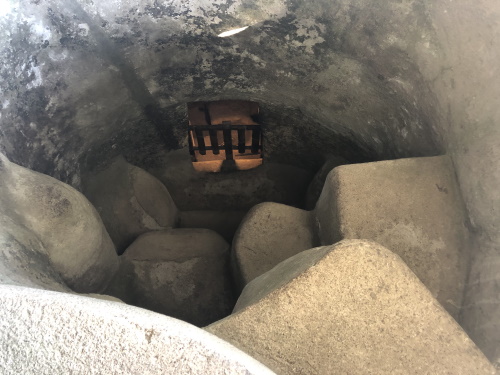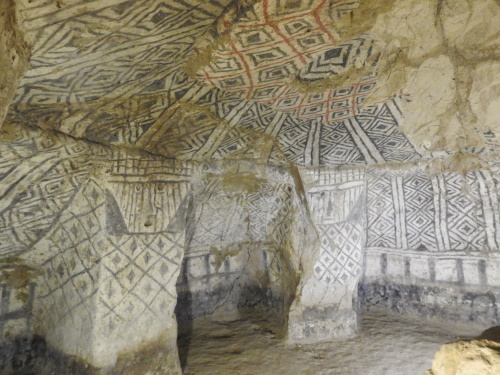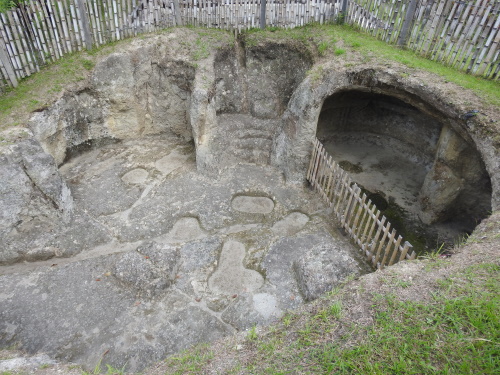Blog WHS Visits
WHS #728: Tierradentro
It proved to be quite hard to reach Tierradentro by public transport. On my first approach I stranded at about km50 on the notorious road #26 between Popayan and Tierradentro: overnight a landslide had occurred and the road was fully blocked to any motorized transport. On foot it would have been possible, but the prospect of venturing on alone on the other side was not so tempting as the options that lay ahead seemed to be:
- being kidnapped by some last remaining FARC guerillas (this road was the only place in Colombia where I saw pro-FARC graffiti),
- being attacked by a spectacled bear (the road also sports yellow signs "be aware of bears" and "be aware of puma’s"), or,
- being assaulted by drunk men (it was New Year’s Day and we had met them consistently unsteady on their feet on the streets in every town along the route).
I succeeded a few days later after having first visited San Agustín: I took a shared taxi from San Agustin to Pitalito, a minibus from Pitalito to Garzon, another minibus from Garzon to La Plata and hopped on the back of a mototaxi for the final gruelling 38km to Tierradentro. It took 6 hours in total, not too bad considering the logistics.
I stayed overnight in Tierradentro, a hamlet that has formed itself around the entrance of the Archaeological Park. The village of San Andres de Pisimbala lies 2.5 km away. Both have very little to get excited about: San Andres has a T-listed Catholic Temple (worth about 2 minutes of your time), while you have to be in Tierradentro anyway to start your visit by buying the ticket to the Park. You can walk or take a mototaxi between them. Food options are very poor in both towns – I found the often recommended La Portada restaurant in San Andres overrated and in Tierradentro I had to rely on Salchipapas.
Like many reviewers before me, I visited 4 out of the 5 locations. I started the walk at opening time, 8 am. I only met 3 young Colombian tourists who did the tombs at about the same pace as I did. Along the route I saw no other tourists, only some local farmers who have their fields in this area.
There’s a whole ritual involved in visiting the hypogea: “opener of tombs” must be a local job description, as the park employs a dozen men or so who act as guardians of a specific cluster of hypogea, check whether the tourist has a ticket and stamp it, and – most importantly – open the cover to the entrance of the underground tomb. I wonder if they rotate? It would be sad to be posted at a set of tombs that aren’t among the highlights so they get skipped by most of the visitors.
Climbing down the staircases into some of the tombs isn’t for those with a fear of heights, as there is no railing to hold on to. I also am a bit unsure going down staircases since I fell down from one headfirst about a year ago at work. But by taking it easy I got the hang of these. They even get a honorary mention as part of the site’s OUV: apparently they are the original ones (although I could swear that I saw some cement added here and there). They come in straight, zigzag, or spiral shapes. The huge spiral one indeed is memorable.
The best-kept tombs are found at location #1, Alto de Segovia. The fourth location (Alto de San Andres) isn’t that interesting decoration-wise (except for one), but here you can see the outline of the construction of an underground tomb. Its roof has collapsed during an earthquake in 1994. It’s a fine walk up there as well: you have to cross two bamboo bridges and the area presents good opportunities for birding.
Els - 19 January 2020
Comments
Jay T 19 January 2020
Sounds like quite an adventure to get to Tierradentro — glad you were able to get there! The artwork in Alto de Segovia looks amazing.


